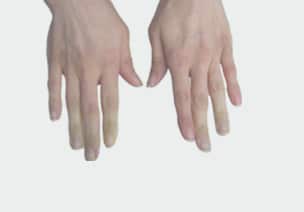
Sjogren’s syndrome Treatment in Dubai, UAE is a chronic rheumatic disease. Its characteristic features are inflammation and destruction of the tear producing and salivary glands. As a result, people who suffer from Sjogren’s syndrome have progressively fewer tears and saliva and experience dryness of the eyes and mouth. Other moisture-producing glands may also be affected and causing dryness in the nose, throat irritation, dry skin or loss of vaginal lubrication. This disease may be mild so that those affected might not seek medical advice at all. In others, Sjogren s syndrome is more severe with arthritis, skin rashes, blood vessel, lung or kidney involvement. Sjogren,s syndrome may occur on its own (primary Sjogren,s syndrome) or in association with another autoimmune rheumatic disease such as rheumatoid arthritis, scleroderma or systemic lupus erythematosus (secondary Sjogren’s syndrome).
Table of contents
What Causes Sjogren’s Syndrome Treatment in Dubai, UAE?
The cause of Sjogren’s syndrome is not known. Scientists believe it may be hereditary and/or infectious in origin. Immune cells (lymphocytes) are found in the glandular tissues causing a chronic inflammation which leads to the destruction of the glands.
Who Gets Sjogren’s Syndrome Treatment in Dubai, UAE?
Sjogren,s syndrome is more common than originally believed. It affects about 0.05% of the Caucasian population. This disorder is 10 times
more common in females compared to males. The usual age of onset is in the fourth to the fifth decade but it may occur at any age.
Signs & Symptoms
As mentioned, this disease causes dry eyes and mouth. When the eyes are dry, the person may experience tiredness and a gritty sensation in the eyes. At times, there may be itching, soreness or even pain of the eyes. When severe, the sufferers themselves will notice they have little or no tears and the eyes maybe red. The lack of saliva causes the person to drink water often especially when talking. Lips and tongue may feel sore and even crack. Food tends to stick to the teeth and dental decay occurs in those with poor oral hygiene. Some may experience intermittent swelling of the salivary glands which appear as swellings at the sides of the face (parotid glands) and below the chin. Other sites such as the nose, throat, skin or vagina may (submandibular glands) may also be dry. Affected individuals may have joint pain and swelling, skin rashes, or breathlessness(if there is lung involvement). They may also feel tired all the time and complain of a lack of energy. In a very small number of patients, Sjogren,s syndrome is associated with lymphoma.
How is it Diagnosed?
If the diagnosis of Sjogren,s syndrome is suspected, blood tests which measure specific autoantibodies will be done. A simple Schirmer’s test should be performed. This test measures the amount of tear formation using a strip of blotting paper. A referral to the ophthalmologist may also be made. A biopsy of one of the salivary glands, usually from the lower lip, can be easily done to demonstrate the presence of inflammation in the salivary glands. Other tests may be required to distinguish Sjogren s Syndrome from other causes of dry eyes and mouth.
What is the Treatment?
Many patients can be helped with control of the symptoms. Artificial tears, regular mouth rinses, lozenges or sips of water, drugs to stimulate saliva secretion, skin moisturiser and vaginal lubricant, provide symptomatic relief. Regular dental visits are important for those with significant salivary loss. For those with arthritis, non-steroidal anti-inflammatory drugs and hydroxychloroquine are the usual drugs used. Sometimes oral corticosteroids may be required for the treatment of fatigue, enlarged salivary glands, and some major organ involvement. Rarely immunosuppressants such as cyclophosphamide may be required.
What is the Prognosis?
Sjogren,s syndrome is not a life threatening disease. The severity of the disease varies from individual to individual and many have mild problems. The overall outlook for many with this condition is good Scleroderma is a disease where the skin and many other parts of the body can become thick and hard. There are two types of scleroderma: localised and generalised. The localised type tends to be milder and affect mainly the skin, while the systemic type may affect the internal organs. The skin is most frequently involved. Many of the patients are sensitive to the cold and their fingers will turn white or blue when exposed to the cold environment (this is known as Raynaud s phenomenon). The internal organs such as the lungs, kidneys, heart, stomach, and intestine may also be involved. The symptoms and signs depend on the organ involved. The skin is thickened and may look shiny. Patches of the skin may become darker or lighter in colour. There may be prominent tiny blood vessels (telangiectasia) on the skin and small chalky lumps (calcinosis) under the skin. Sometimes, there are ulcers at the bony prominence. The patients often notice changes of the color of their hands and feet upon cold exposure when they go into
The skin is most frequently involved. Many of the patients are sensitive to the cold and their fingers will turn white or blue when exposed to the cold environment (this is known as Raynaud s phenomenon). The internal organs such as the lungs, kidneys, heart, stomach, and intestine may also be involved.